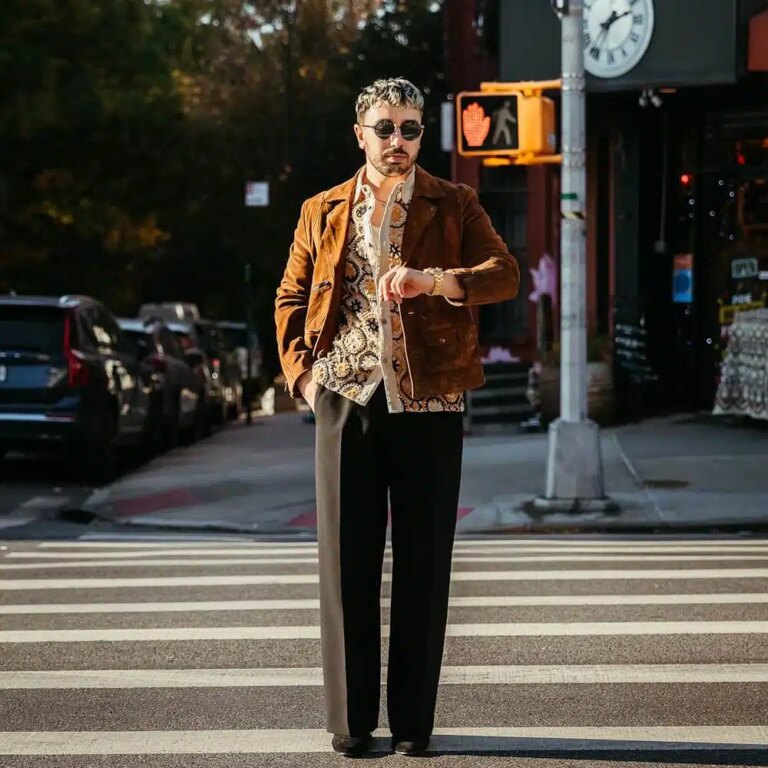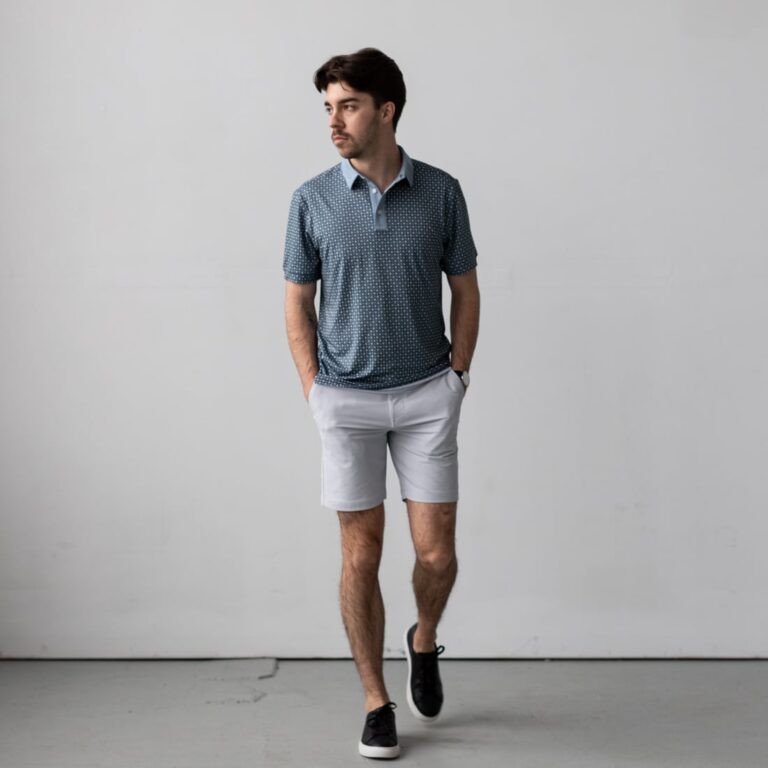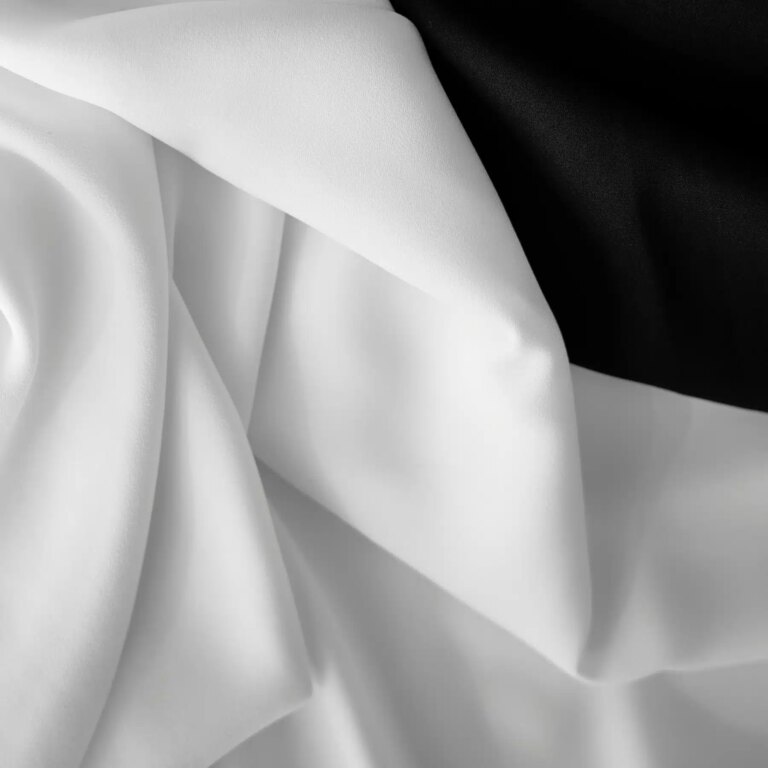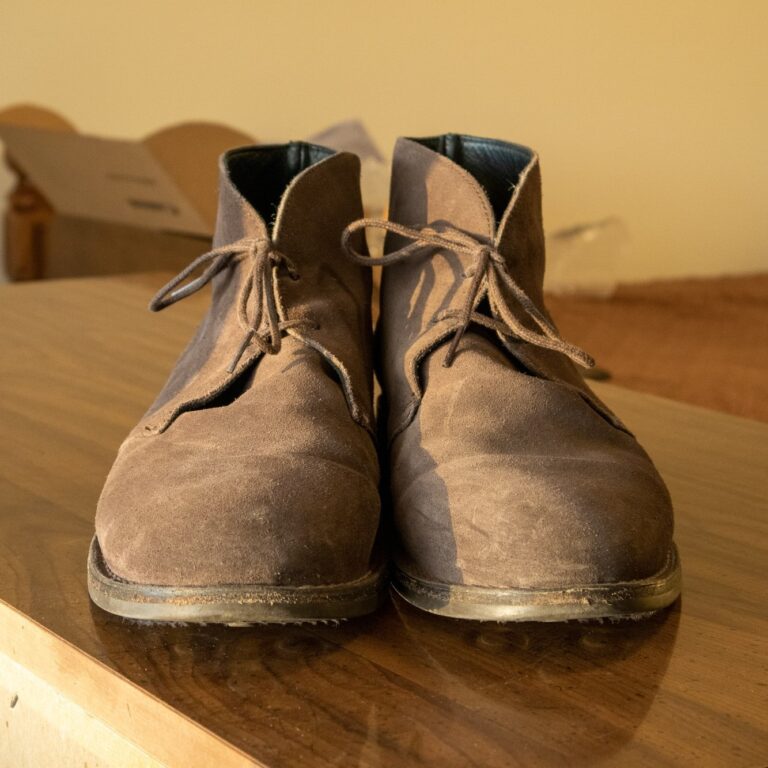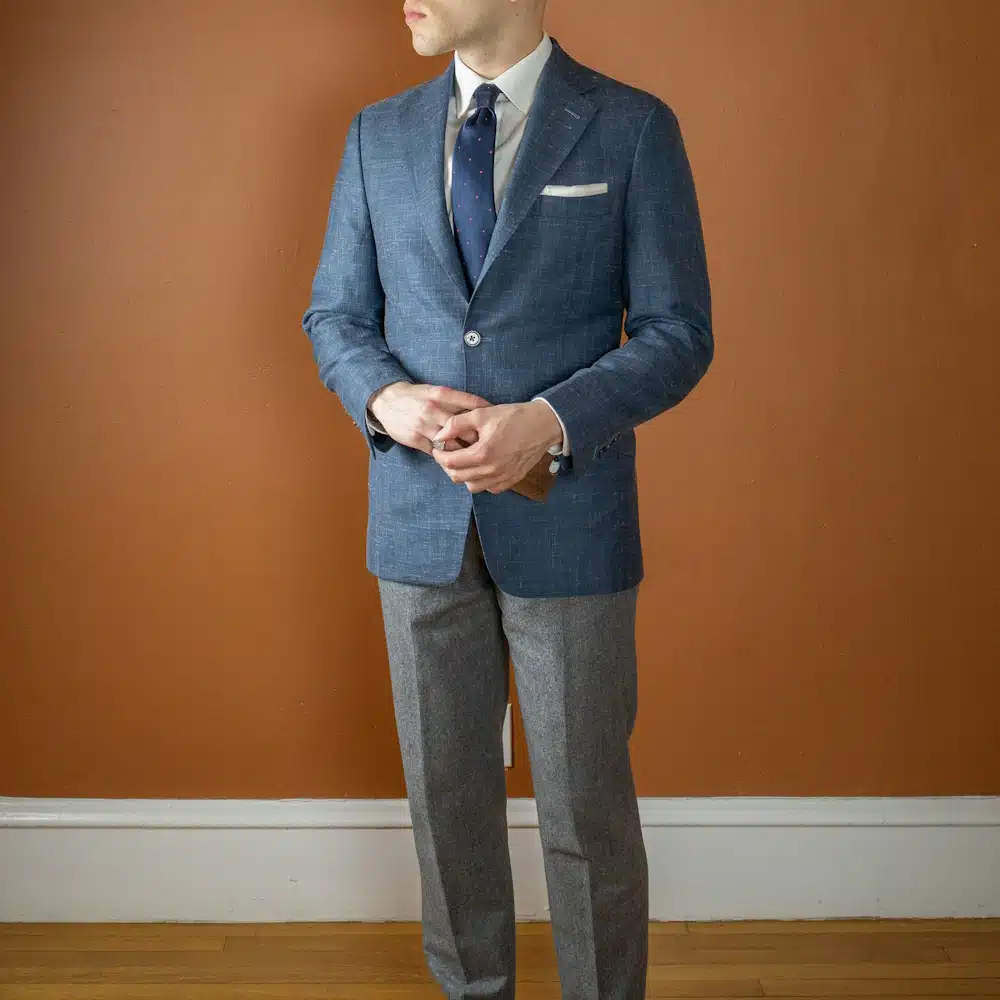
Usually wear graphic tees and ripped jeans to a concert? While that’s perfect for a mosh pit, it’s out of place at the symphony. Here’s what to wear instead.

Attending the symphony can be daunting for the uninitiated. Seemingly archaic customs and traditions abound.
When do I clap?
Why is that guy waving around a stick?
People are standing and clapping. Should I stand too?
What do I wear?
While many questions can be cleared up before the performance begins, it’s best to know what to wear well-beforehand.
Since I know it can be a bit confusing, today, I’ll do my best to demystify what you should wear to attend a classical music performance. I must admit that this guide is a bit on the formal side.
Since how to dress for the symphony depends on the venue, weather, and local customs, clothing suggestions are arranged roughly from most to least formal.
A Tuxedo
It’s not very often that going to the symphony necessitates wearing a tux. However, there are exceptions.

Black or even white tie is common in Vienna, for instance.
In the US, tuxedos aren’t so common, though I have seen some men wearing them even at “dress-code-undefined” venues.
However, some orchestras invite music lovers to dress to the nines for special occasions. For instance, the Boston Symphony’s Opening Night Gala is a black-tie charity event. On all other nights, more casual dress prevails.
The classic tuxedo includes a tuxedo jacket, pants, a shirt (with shirt studs), a bow tie, a waistcoat or cummerbund, black Oxfords (at a minimum), cufflinks, and a pocket square.
For details on how to wear a tux, check out this detailed guide.
A Three-Piece Suit
The three-piece suit fits in as a good choice for attending professional symphonies.

This classic choice is ideal for larger performances who tend to be hosted at historic venues. A three-piece suit may look a little out of place at a smaller, local performance, but will never be unacceptable.
For less grand outings, skip the vest and tie to take this outfit down a notch.
Full Suit, No Tie
A lighter color suit, like this one from Proper Cloth, will impress your date (and her parents) when you pick her up for the symphony.

Take special care and don’t forget to include a pocket square.
Suit Separates
Furthermore, putting together suit separates blends formality with casualness seamlessly. I’ve noticed that this style is very common at East Coast symphonies.

For an outfit like this, you could even opt out of a tie, with the appropriate dress shirt with a more relaxed collar. I would recommend including the tie if you have a stiffer collared dress shirt, as pictured above.
Layering a Turtleneck
Turtlenecks are a great option alone, but an even better option with a blazer and an overcoat.

Now here we have a turtleneck and suit combo, all of the same (or close to the same) color. A combination like this declares “I’m an artist”, but is also especially stylish in nighttime symphonies.
Monochromatic Turtleneck With a Suit
This is a super versatile choice and is somewhat common among those who frequent the symphony. It exudes a sophisticated aura, without being too overbearing.

A dark color palette like this might look a bit odd during the day but is perfectly matched to the midnight sky.
Turtleneck With a Double-Breasted Suit
One variation of the monochromatic turtleneck and suit combination favors the double-breasted blazer over the single.
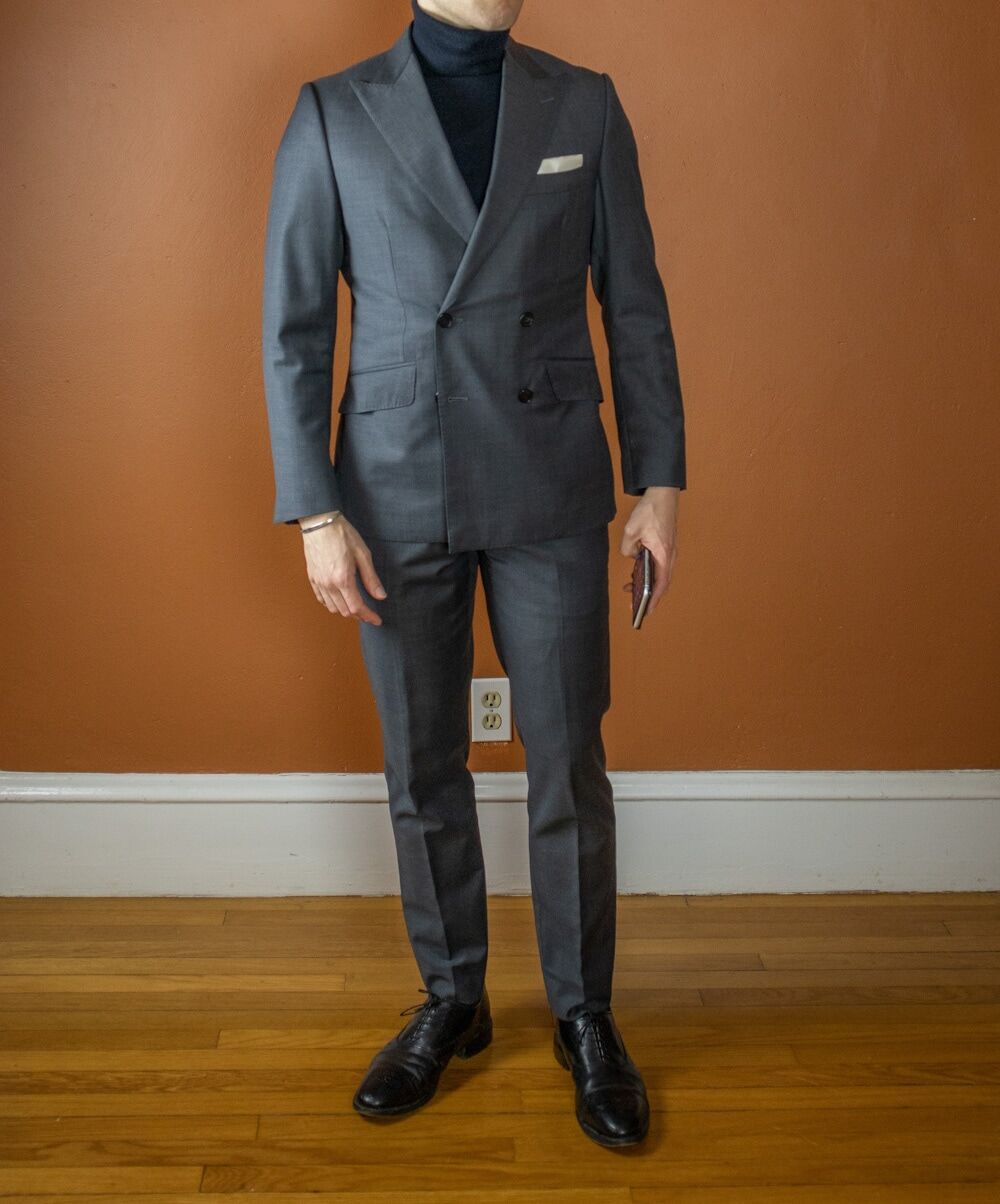
This is just as versatile as the prior example, only with a bit more flair.
Denim Chore Jacket Dressed Up
Yes, there are some occasions where even denim jackets are appropriate for the symphony. The key is selecting the right type of jean jacket.

An acid washed, torn jacket is not going to look good in a crowd of symphony goers. A dark blue denim chore jacket on top of textured, wool flannel pants will do just fine.
I hope you’ve noticed by now just how versatile a pair of well-fitting mid-grey wool trousers are.
Open Double-Breasted Overcoat
A double-breasted overcoat, worn open, over a long-sleeved white polo, will also work for you at the symphony.

Here, I finish the look off with a pair of Chukka boots.
Monochromatic and Jacketless
Business meets bravo.

A simple, dark button-down dress shirt with charcoal pants, like the one pictured above, satisfies the requirements for many a symphony. This combination, or similar variations, works both indoors and outdoors, day or night.
Grey and Comfy
If you want to wear a sweater that is not a turtleneck, another great choice is the Aran sweater. The knitted pattern gives the sweater a chunkier look.

Because of this, I chose to balance it out with straight-legged trousers to avoid a disproportionate look through my upper body to my midsection to my legs.
This outfit is incredibly comfortable. It feels like I’m wearing pajamas.
Dark Monochromatic With a Checked Shirt
Patterned shirts are another viable option. For this, consider some medium-high-waisted trousers (and yes, tuck your shirt in).

I prefer darker color schemes with a patterned shirt for a little more subtlety. You can wear your sleeves down for a cool evening event, or roll them up for a midday matinee.
Long-Sleeve White Polo and Blue Trousers
Calm, cool, and collected; a white, long-sleeved dress polo on top of your favorite pair of blue dress pants. This combination is optimal for summer concerts and performances.

In particular, this jacket-less option would be ideal for outdoor venues like Tanglewood.
Short-Sleeve Polo and Minimal Sneakers
This is a variation on the previous example. Consider a polo shirt with a pair of slacks or chinos for summer symphonies.

This is a great solution to not only crowded indoor concert halls but also outdoor amphitheaters under the afternoon sun.
Quarter-Zip Sweater and Jeans
While I like to dress up for the symphony, most people honestly don’t. And that’s ok! Orchestras by no means want to exclude anyone from participating in the celebration of music and art.

This being said, the most common outfit you may find worn at the symphony is similar to the one above.
A pair of denim, solid blue jeans, with no tears or distressing, accompanied by a collared dress shirt and a sweater, is a casual yet sophisticated option for attendees from all walks of life.
Q&A
Here are some answers to common questions about choosing what to wear to the symphony.
Do symphonies have a dress code?
This will depend on the symphony. Always check your tickets or the symphony’s website before planning your outfit to attend. Most of the time, there’s not a written-out dress code, but dress at least smart-casual.
What do I wear to the symphony?
To best use this guide, check the time and location of your event and choose the corresponding style that fits you and the performance.
Can I wear jeans to the symphony?
Jeans, chinos, or other pants that are not traditionally considered dress pants can all be acceptable when styled correctly. Denim jackets, as I pointed out, can also be a viable option for more casual concerts.
Should I wear a suit to the symphony?
You should wear whatever makes you feel best, per the symphony’s dress code. If you feel confident in a suit, wear the suit!
Should I wear a tie to the symphony?
Wearing a tie to the symphony is usually optional. If you are wearing a jacket, determine if your dress shirt is built for a tie then decide if you would like to wear a tie or not. If you are not wearing a jacket, skip the tie.
Final Thoughts: Contribute To The Art
A concert is a work of living art. While I know this may sound a bit pretentious, but I truly believe that as an audience member you are, in a small way, part of the art. This point is masterfully conveyed by John Cage’s controversial piece, 4′33″.
What you wear either contributes or detracts from the ambiance. It colors your own experience and that of those around you. Even if you’re a regular concert-goer, I encourage you to try dressing up for the symphony.
If you do, let me know afterwards in the comments if you noticed a difference in your listening experience.
